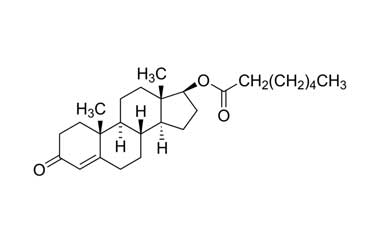Enantate: The Key to Achieving Your Bodybuilding Goals Efficiently
Enantate: The Key to Achieving Your Bodybuilding Goals Efficiently
Blog Article
Loyalty System Insights: Rewarding Consumers and Expanding Your Brand Name
In a progressively competitive marketplace, the application of loyalty systems has emerged as a strategic necessary for brands seeking to enhance client interaction and drive growth. As we explore the ins and outs of loyalty programs, it ends up being clear that understanding their influence can open considerable opportunities for brand names prepared to innovate.
Understanding Loyalty Programs
In the realm of customer engagement, loyalty programs function as crucial tools for cultivating long-lasting relationships in between brands and their consumers. These programs are created to incentivize repeat purchases and grow brand allegiance via structured benefits systems (enantate). At their core, loyalty programs typically supply points, discounts, or special advantages in exchange for consumer acquisitions, urging ongoing interaction with the brand
Recognizing the mechanics of commitment programs is critical for services intending to apply reliable strategies. Effective programs are usually tiered, enabling customers to unlock greater incentives as they proceed, thus boosting their involvement. They can vary substantially in structure, from points-based systems to subscription clubs, each customized to certain consumer behaviors and choices.
In addition, the data collected through loyalty programs provides important insights into consumer preferences and acquiring routines. This information enables brand names to customize advertising efforts, refine item offerings, and boost total client experience. Eventually, an effective commitment program not just reinforces customer retention but likewise straightens with more comprehensive organization goals, making certain that both the brand and its customers gain from the relationship established via these engagement efforts.
Advantages of Customer Rewards
Customer benefits programs use considerable benefits for both organizations and customers, developing a win-win scenario that enhances loyalty and drives sales. For consumers, these programs give tangible advantages that incentivize repeat purchases. Clients appreciate getting benefits, whether in the kind of discount rates, factors, or exclusive offers, which can cause raised satisfaction and a more powerful emotional link to the brand name.

Furthermore, rewards programs allow organizations to accumulate valuable data on consumer behavior, allowing them to customize advertising and marketing approaches and item offerings to much better satisfy consumer needs. This customized technique not only enhances the client experience but additionally fosters a sense of belonging and community amongst devoted customers. Overall, the application of customer rewards programs is a critical financial investment that yields substantial returns for both parties included.
Creating Effective Incentives
Reliable rewards are the backbone of effective consumer incentives programs, straight influencing customer behavior and involvement. To create efficient incentives, services should initially comprehend their target market's requirements and preferences. Customizing rewards to line up with customer worths promotes a sense of link and loyalty.
Following, think about the variety of reward kinds. Financial rewards, such as price cuts or cashback, appeal to cost-conscious consumers, while experiential rewards, like unique occasions or very early access to items, can attract those seeking unique experiences. Incorporating tiered reward frameworks urges continuous engagement, as consumers are inspired to reach higher degrees for better incentives.
Simpleness is additionally vital; complex incentive systems can result in consumer irritation and disengagement. Clear interaction regarding how the program works and the advantages of participation is essential. Moreover, regular responses from consumers can provide important understandings right into just how to improve the reward offerings.
Gauging Program Success
Success measurement in commitment programs is important for comprehending their impact on customer retention and total organization efficiency. Organizations has to establish clear metrics to review the performance of their loyalty initiatives. Trick efficiency indicators (KPIs) such as consumer retention rates, frequency of acquisitions, and typical deal value his explanation supply useful understandings right into consumer behavior and program performance.
Additionally, tracking consumer involvement with enrollment rates and point redemption patterns can reveal exactly how well the program reverberates with customers. Carrying out regular surveys and responses sessions permits brand names to evaluate client contentment and identify locations for improvement.
Examining the return on investment (ROI) of loyalty programs is also critical. This involves comparing the expenses of program application and upkeep against the earnings generated from dedicated clients. By segmenting information to understand the behavior of various consumer groups, companies can customize their approaches to take full advantage of efficiency.
Eventually, a detailed method to gauging program success not only educates decision-making but likewise allows brand names to refine their commitment initiatives, ensuring they continue to be appropriate and helpful to both the company and the consumer. - enantate
Situation Studies of Success
Analyzing the performance of loyalty programs with study gives concrete examples of how various companies have actually successfully executed methods to boost customer involvement and retention. One noteworthy instance is Starbucks, which revamped its loyalty program to integrate a mobile app that permits consumers to earn stars with every acquisition. This technique not only boosted consumer engagement but also led to a 30% rise in rewards program membership, substantially enhancing sales.

Finally, Amazon Prime exhibits exactly how a subscription-based loyalty program can drive consumer retention. By offering exclusive web content, totally free delivery, and unique discount rates, Amazon has actually cultivated a faithful client base, with Prime participants investing significantly greater than non-members.
These case researches show that well-implemented commitment programs can bring about increased consumer loyalty, higher costs, and ultimately, boosted brand development.
Conclusion
To conclude, commitment systems offer as directory a crucial device original site for boosting customer interaction and cultivating brand name commitment. By implementing tiered rewards and structured incentives, services can efficiently inspire customer involvement and complete satisfaction. The insights acquired from these programs not only educate targeted advertising strategies but also contribute to enhanced investing and positive brand name perception. Ultimately, a properly designed loyalty program can lead to lasting growth and an affordable advantage in the industry.
In the realm of consumer engagement, loyalty programs serve as critical tools for cultivating long-lasting connections between brand names and their clients - enantate. Inevitably, an effective loyalty program not just enhances customer retention however additionally straightens with more comprehensive company objectives, guaranteeing that both the brand and its customers benefit from the partnership established through these engagement initiatives
Consumer incentives programs use considerable benefits for both customers and services, creating a win-win scenario that boosts commitment and drives sales.From a service point of view, customer benefits programs help with greater consumer retention. Secret performance indications (KPIs) such as consumer retention rates, frequency of acquisitions, and average purchase worth supply beneficial insights into consumer behavior and program efficiency.
Report this page